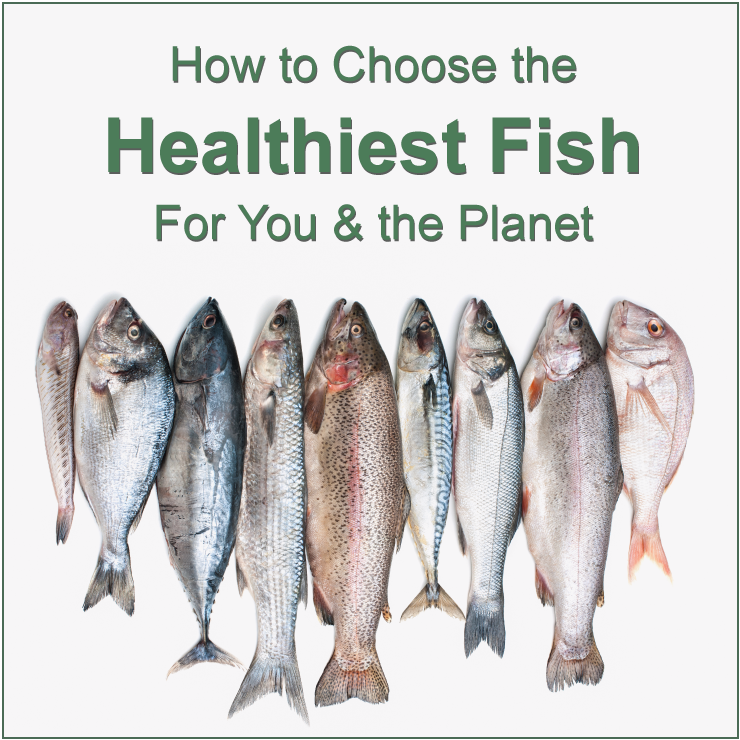
How do you choose fish that is high in nutrients, low in mercury and other pollutants, and environmentally sustainable? It is possible!
Health Benefits of Fish
Canada’s Food Guide recommends eating 2 servings (1 serving is 75 grams or the size of a deck of cards) of fish per week as part of a healthy diet. Fish is recommended because it is high in protein and low in saturated fat. Many varieties of fish are also sources of omega-3 fatty acids, which help reduce inflammation and heart disease risk, and vitamin D, which is needed for bone health and may help reduce cancer risk. Eating fish twice a week may also help reduce the risk of Alzheimer’s disease, depression and stroke.
Fish is rich in nutrients such as selenium and vitamin B12. Selenium is a mineral that works as an antioxidant, particularly when paired with vitamin E. It is important for a healthy immune system as it is needed to build white blood cells. Selenium also plays a role in thyroid function.
People with cancer tend to have lower levels of selenium, but we don’t know whether this is a cause or an effect of the cancer. Getting more selenium in your diet (not by supplements) if you have low levels may reduce the risk of prostate cancer.
Mercury, PCBs and Pesticides, Oh My!
Mercury is a metal found naturally in soil and water but higher amounts were released into the environment from burning coal and metal mining. Low amounts of mercury are found in many foods but the highest amounts are found in certain types of fish. High levels of mercury are a concern because they can cause nerve damage in adults and might increase heart disease risk. Avoiding fish high in mercury is important for pregnant women and children because high levels of mercury can affect brain development.
To reduce the amount of mercury and other pollutants you eat, choose smaller, younger fish. Larger, older fish that are higher up on the food chain will absorb all of the chemicals from the smaller fish they eat and this will be stored in their flesh.
Health Canada recommends that pregnant women limit albacore labeled as canned “white” tuna to 2 cans a week and children to 1 can a week as it is higher in mercury
Examples of high-mercury fish to avoid include ahi tuna, marlin, shark, swordfish, and Chilean sea bass.
PCBs (polychlorinated biphenyls) are chemicals that were banned in North America in 1977 but trace amounts remain in our environment. These chemicals can build up in the fat of fish and the flesh of other animals, but total levels in food, air and water are monitored by Health Canada.
High levels of PCBs may reduce fertility and long-term PCB exposure in factory workers has been shown to increase the risk of liver and kidney cancers. Farmed salmon is particularly high in PCBs with 5-10 times the amount of PCBs as wild salmon. To lower your exposure to PCBs and for an environmentally sustainable choice, avoid farmed salmon and choose wild Pacific salmon or visit
OceanWise, a program from the Vancouver Aquarium that lists sustainable fish and seafood choices.
The Bottom Line
Concerns about mercury and PCBs should not prevent you from choosing fish as part of a healthy diet. Research suggests that the health benefits from omega-3 fatty acids found in fish outweigh the small risk associated with getting trace amounts of mercury and PCBs.
Another bonus: fish that are environmentally sustainable also tend to be lower in mercury and other pollutants.
Fish that get top marks for being high in omega 3-fatty acids, low in mercury and environmentally sustainable include wild Pacific salmon, freshwater Coho salmon, Pacific sardines, Atlantic mackerel, B.C. Pacific herring, and Pacific skipjack tuna. If you are buying canned tuna, skipjack tuna is labeled as “light” tuna.
For More Information
For a list of fish choices that are rich in omega-3s, good for the environment and low in mercury, see the Monterrey Bay Aquarium’s
Super Green List. You can also check out
OceanWise to search for sustainable fish choices, download a copy of their sustainable seafood guide, or download their app for your phone.
For delicious and nutritious fish recipes, try one of these recipes from the ELLICSR Kitchen:
